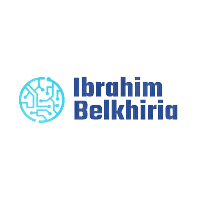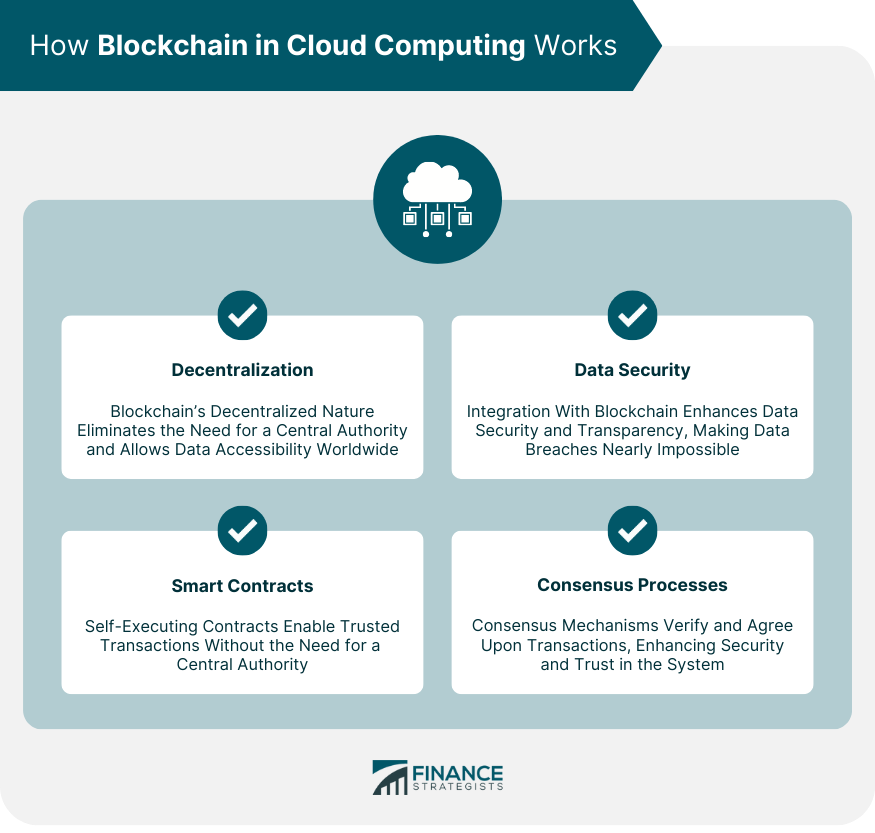Introduction
What is blockchain?
Blockchain is a decentralized and distributed digital ledger that records transactions across multiple computers. It is designed to be transparent, secure, and immutable, ensuring the integrity of data. In simpler terms, blockchain is like a digital spreadsheet that keeps track of transactions, but instead of being stored in one central location, it is duplicated and stored on multiple computers, known as nodes, which are connected to a network. This decentralized nature of blockchain eliminates the need for a central authority, such as a bank or government, to validate and verify transactions, making it a more efficient and reliable system.
History of blockchain
The history of blockchain dates back to 2008 when an anonymous person or group of people known as Satoshi Nakamoto introduced the concept of blockchain technology through a whitepaper titled ‘Bitcoin: A Peer-to-Peer Electronic Cash System.’ This groundbreaking paper outlined the fundamental principles and mechanisms that underpin blockchain technology. The main objective of blockchain was to create a decentralized digital currency that could operate without the need for intermediaries like banks. Since then, blockchain has evolved beyond its initial application in cryptocurrencies and has found use cases in various industries such as finance, supply chain management, and healthcare. The history of blockchain is a testament to the transformative power of this technology and its potential to revolutionize how we transact, store data, and trust in the digital age.
Importance of blockchain
Blockchain technology has gained immense importance in recent years due to its ability to provide secure and transparent transactions. One of the key advantages of blockchain is its decentralized nature, which eliminates the need for intermediaries and reduces the risk of fraud. This technology has the potential to revolutionize various industries, including finance, supply chain management, healthcare, and more. By providing a tamper-proof and immutable ledger, blockchain ensures trust and integrity in transactions, making it an invaluable tool in today’s digital world.
Key Concepts of Blockchain

Decentralization
Decentralization is a key concept in blockchain technology. It refers to the distribution of power and control across a network of computers, rather than being centralized in a single authority. This ensures that no single entity has complete control over the system, making it more secure and resistant to censorship. In a decentralized blockchain network, every participant has a copy of the entire blockchain, and consensus is achieved through a consensus algorithm. This allows for trust and transparency, as the integrity of the system is maintained by the collective agreement of the network participants.
Consensus mechanism
The consensus mechanism is a crucial component of blockchain technology. It is responsible for ensuring that all participants in the network agree on the validity of transactions and the order in which they are added to the blockchain. There are various consensus mechanisms used in different blockchain networks, each with its own advantages and limitations. Some popular consensus mechanisms include Proof of Work (PoW), Proof of Stake (PoS), and Delegated Proof of Stake (DPoS). These mechanisms utilize different algorithms and incentives to achieve consensus among participants. The choice of consensus mechanism can have significant implications for the security, scalability, and decentralization of a blockchain network.
Cryptographic security
Cryptographic security is a crucial aspect of blockchain technology. It ensures the confidentiality, integrity, and authenticity of the data stored on the blockchain. Through the use of advanced cryptographic algorithms, blockchain networks are able to secure transactions and prevent unauthorized access or tampering. The cryptographic techniques employed in blockchain, such as hashing and digital signatures, provide a high level of security and make it virtually impossible for hackers to manipulate the data. With cryptographic security in place, blockchain technology offers a reliable and trusted platform for various applications, including financial transactions, supply chain management, and decentralized applications.
Components of a Blockchain

Blocks
Blocks are an essential component of blockchain technology. They serve as the building blocks of the entire system, containing a collection of transactions that have been verified and added to the blockchain. Each block is linked to the previous block through a cryptographic hash, creating a chain of blocks. This ensures the integrity and security of the data stored in the blockchain. Blocks also play a crucial role in the consensus mechanism, as they are used to validate and confirm transactions. By organizing transactions into blocks, blockchain technology allows for efficient and secure data storage and transfer.
Transactions
Transactions are a fundamental aspect of blockchain technology. They represent the transfer of digital assets or information from one party to another. In a blockchain network, transactions are grouped together in blocks and added to a decentralized ledger. Each transaction is verified by network participants, ensuring its validity and preventing any fraudulent activities. The transparency and immutability of blockchain technology make transactions secure and reliable, revolutionizing various industries such as finance, supply chain management, and healthcare. With blockchain, transactions become faster, more efficient, and less prone to errors or manipulation.
Nodes
Nodes are an integral part of the blockchain network. They play a crucial role in maintaining the decentralized nature of the system. In simple terms, nodes are individual computers or devices that participate in the blockchain network. Each node stores a copy of the entire blockchain, which contains all the transactions ever made on the network. These nodes communicate with each other and validate new transactions, ensuring that they adhere to the network’s rules and protocols. By working together, nodes create consensus and ensure the integrity and security of the blockchain. Without nodes, the blockchain would not be able to function as a decentralized and trustless system.
How Blockchain Works

Creating a new block
Creating a new block is a fundamental process in blockchain technology. When a transaction is initiated on a blockchain network, it needs to be verified and added to a block before it can be considered valid. This process involves several steps. First, the network nodes receive the transaction and validate its authenticity. Then, they compete to solve a complex mathematical puzzle known as proof-of-work. The first node to solve the puzzle adds the transaction to a new block along with other validated transactions. Once the block is created, it is added to the blockchain, forming a chain of blocks that contains a complete history of all transactions. This decentralized and transparent process ensures the security and integrity of the blockchain network.
Verifying transactions
Blockchain technology verifies transactions by utilizing a decentralized network of computers, also known as nodes. When a transaction is initiated, it is broadcasted to the network, and the nodes work together to validate the transaction’s authenticity. This verification process involves checking the transaction details, ensuring that the sender has sufficient funds, and confirming that the transaction follows the predefined rules of the blockchain. Once a consensus is reached among the nodes that the transaction is valid, it is added to a block and permanently recorded on the blockchain. This decentralized verification mechanism provides transparency, security, and immutability to the transactions performed on a blockchain.
Adding the block to the chain
After successfully validating the transactions and creating a new block, the next step in the blockchain process is to add the block to the chain. This crucial step ensures the integrity and immutability of the blockchain. When a block is added to the chain, it becomes a permanent part of the ledger, making it nearly impossible to alter or tamper with the recorded data. The process of adding a block involves a consensus mechanism, where the majority of the network participants agree on the validity of the block. Once the consensus is reached, the block is appended to the existing chain, creating a sequential and transparent record of all transactions. This decentralized nature of adding blocks to the chain makes blockchain technology highly secure and resistant to fraud or manipulation.
Use Cases of Blockchain

Cryptocurrencies
Cryptocurrencies have emerged as one of the most prominent applications of blockchain technology. These digital currencies, such as Bitcoin and Ethereum, operate on decentralized networks and utilize cryptographic techniques to secure transactions. Unlike traditional fiat currencies, cryptocurrencies are not controlled by any central authority, making them resistant to censorship and government interference. The use of blockchain technology ensures transparency, immutability, and security in the cryptocurrency ecosystem, making it an attractive alternative to traditional financial systems.
Supply chain management
Supply chain management is a critical aspect of any business, and blockchain technology has the potential to revolutionize this field. By leveraging the decentralized and transparent nature of blockchain, supply chain management can become more efficient, secure, and trustworthy. With blockchain, businesses can track and trace products from their origin to the end consumer, ensuring that they are authentic and of high quality. Additionally, blockchain can enable real-time visibility into the movement of goods, reducing delays and improving overall logistics. The immutability of blockchain also provides a tamper-proof record of transactions, making it easier to detect and prevent fraud. Overall, the integration of blockchain in supply chain management holds immense promise for enhancing transparency, accountability, and efficiency in the global supply chain.
Smart contracts
Smart contracts are self-executing contracts with the terms of the agreement directly written into lines of code. These contracts automatically execute when the predefined conditions in the code are met, eliminating the need for intermediaries and ensuring transparency and efficiency. By utilizing blockchain technology, smart contracts enable secure and tamper-proof transactions, making them a crucial component of decentralized applications and the backbone of blockchain ecosystems. They have the potential to revolutionize various industries, including finance, supply chain management, and real estate, by streamlining processes and reducing costs. With their ability to automate complex tasks and enforce agreements without human intervention, smart contracts have the power to transform the way we conduct business and interact with digital assets.
Challenges and Future of Blockchain

Scalability
Scalability is a crucial aspect when it comes to the success and widespread adoption of blockchain technology. As the number of participants and transactions on a blockchain network increases, it is essential to ensure that the system can handle the growing load. Blockchain scalability refers to the ability of a blockchain network to accommodate a large number of transactions without compromising its performance and efficiency. Various approaches, such as sharding, off-chain scaling solutions, and layer 2 protocols, are being explored to address the scalability challenges of blockchain technology. These solutions aim to improve transaction throughput, reduce latency, and enhance the overall scalability of blockchain networks, paving the way for the realization of its full potential in various industries.
Regulation and legal challenges
Blockchain technology has gained significant attention in recent years, revolutionizing various industries. However, along with its potential benefits, there are also several regulation and legal challenges that need to be addressed. One of the key concerns is the lack of standardized regulations across different jurisdictions. As blockchain operates on a decentralized network, it becomes difficult to enforce traditional legal frameworks. Additionally, issues related to privacy, security, and identity verification pose significant challenges in the adoption of blockchain technology. Governments and regulatory bodies are actively working towards developing comprehensive frameworks to address these challenges and ensure the responsible and secure implementation of blockchain technology.
Integration with other technologies
Blockchain technology has gained immense popularity due to its potential to integrate with other technologies. One of the key advantages of blockchain is its ability to seamlessly connect with existing systems, enabling secure and efficient data transfer. By integrating blockchain with other technologies such as Internet of Things (IoT), Artificial Intelligence (AI), and cloud computing, businesses can unlock new possibilities and enhance their operations. For example, by combining blockchain with IoT, companies can create a decentralized network of connected devices that securely exchange data, leading to improved transparency and trust. Similarly, integrating blockchain with AI can enable smart contract automation, reducing the need for intermediaries and streamlining business processes. Overall, the integration of blockchain with other technologies holds great promise for revolutionizing various industries and driving innovation.

